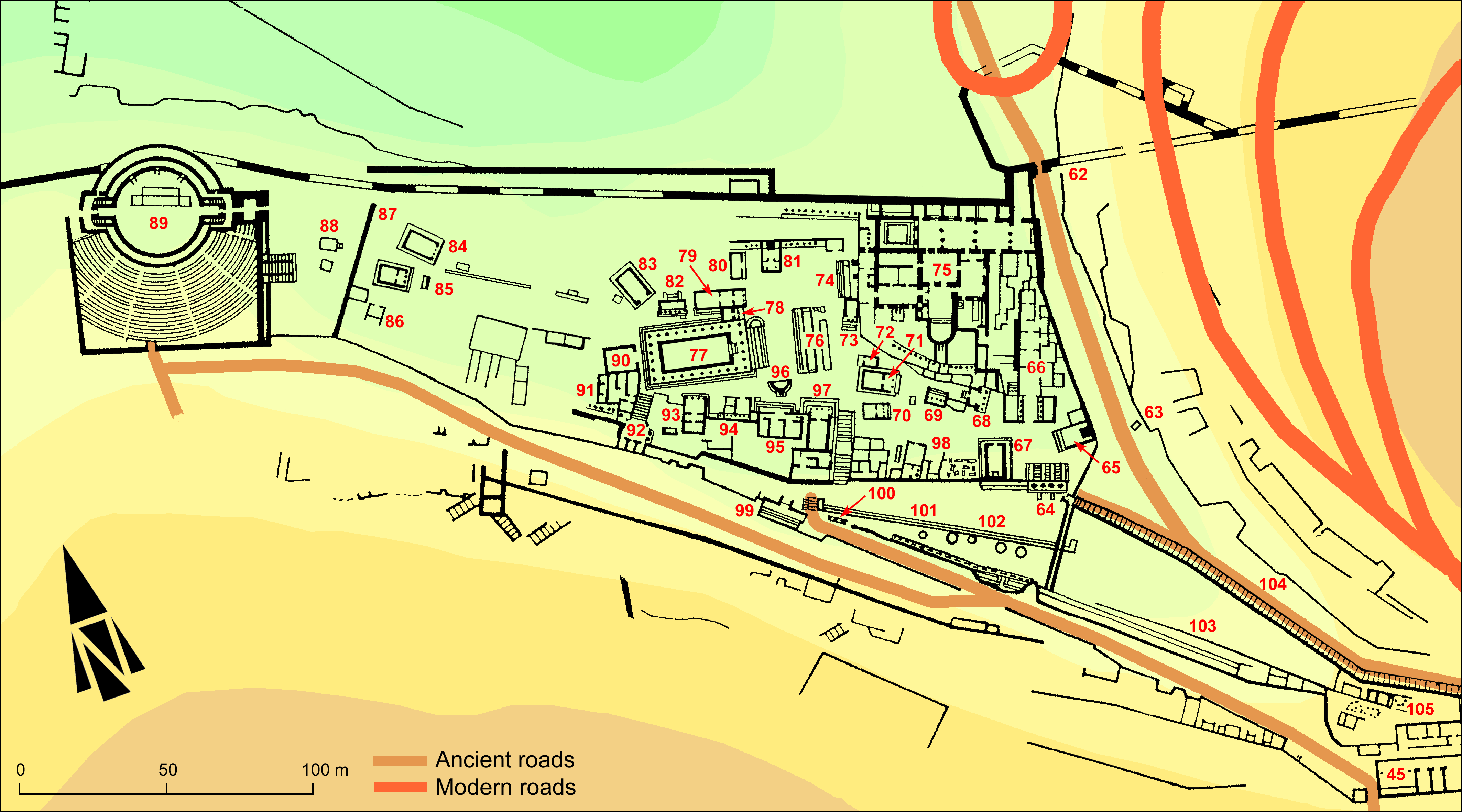EpiDoc XML:
IGCyr0981002
Trismegistos ID:
738498
Source description
Support: Fragment of light-grey marble base broken off at left, right and below (w: 0.16 × h: 0.06 × d: 0.12); on top there is a circular depression, leaving a polished margin (width at most 0.035).
Layout: Inscribed on front face.
Letters: 0.015; not very careful lettering, smaller omicron, slanting mu and sigma, upper part of upsilon widely open.
Date: Third century BC (lettering).
Findspot: Found in 1934 by G. Oliverio at Cyrene ➚: Sanctuary of Apollo (see commentary).
Place of origin: Findspot.
Last recorded location: Cyrene Museum, 271. Seen by G. Pugliese Caratelli in 1960 in Shahat: Cyrene Museum. Seen by C. Dobias-Lalou at the same place in 1976.
Text constituted from: Transcription from stone (CDL).
Bibliography
Oliverio , VI.71, whence SECir, 128; erroneously republished by Mohamed – Reynolds 1998, pp. 139-40 n. 1a, whence Dobias-Lalou, BE, 1999.625 and SEG, 48.2063; IGCyr 098100 ➚.
Cf. Rosamilia 2023, p. 105 (prosopography, date).
Text
Apparatus
1: [---]ος SECir IGCyr: [Τιμόνοθ?]ος Rosamilia 2023 || Κομ[άτα?]: Κομ[---] SECir; Κομ[ανῶ?] Mohamed – Reynolds 1998
French translation
[---]os fils de Kom[atas?] (scil. a consacré ce monument) durant sa prêtrise [------?]
English translation
[---]os son of Kom[atas?] (scil. dedicated this monument) while being priest [------?]
Italian translation
[---]os figlio di Kom[atas?] (scil. ha dedicato questo monumento) quando era sacerdote [------?]
Commentary
The re-publication of the fragment by Mohamed – Reynolds 1998, pp. 139-40 n. 1a is the result of an error on the inventory number; given there as 2072, it would have proven a common provenance with other objects found at Martūbah, whereas the very clear photo shows the inventory number 271, corresponding to the stone seen by C. Dobias-Lalou in 1976 and published after autopsy by Pugliese Carratelli with help of Oliverio's archive for the findspot. We infer the date of find from the number of the latter's notebook.
As to the father's name, we reject the restoration Κομανός, a Roman name, and prefer the Greek name Κομάτας. It is thus worth mentioning that this is the father's name of two different men having a personal name ending with -os, one known as an officer about 340 at IGCyr0068002, the other having contributed to a subscription about 280 at IGCyr0652102. Rosamilia 2023 prefers the latter, named Timonothos, and dates his priesthood between 246 and 220 BC. This restitution is tantalizing. However, Dobias-Lalou sticks cautiously to the reading already adopted for the first edition of IGCyr.
Rather than an altar (pace Mohamed – Reynolds 1998), this base might have been surmounted by a stone basin of a type often dedicated in the sanctuary of Apollo.
The stone is broken below, so that the dedication may have been complete with the preserved two lines, but may also have included the verb of dedication and the name of the god on more lines below.
CC BY-NC-SA 4.0 Deed Attribution-NonCommercial-ShareAlike 4.0 International License.
All citation, reuse or distribution of this work must contain a link back to DOI: https://doi.org/10.60760/unibo/igcyrgvcyr2 and the filename (IGCyr000000 or GVCyr000), as well as the year of consultation.


